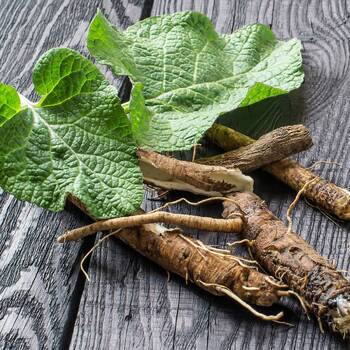
How to Grow Burdock Seeds
Grow Guide #2491
Family: Asteraceae
Binomial name: Arctium lappa
Life Cycle: Biennial
This 'How to Grow' guide details everything a home gardener needs to know to plant, grow and care for Burdock (Arctium lappa).
When to Sow Burdock Seeds
Burdock can be grown year-round in most climates. Avoid planting in extremely hot or cold weather which can affect germination and growth. Use the table below to identify the best time of year to sow burdock in your climate.
| JAN | FEB | MAR | APR | MAY | JUN | JUL | AUG | SEP | OCT | NOV | DEC | |
|---|---|---|---|---|---|---|---|---|---|---|---|---|
| Cool | ||||||||||||
| Temperate | ||||||||||||
| Sub-Tropical | ||||||||||||
| Tropical | ||||||||||||
| Arid |
Preparation
Burdock plants are best grown in full sun or part shade. Choose a location that will receive at least 3 hours of full sun each day.
Burdock roots can grow 1m or more in length. Plants need a very deep, loose, well drained soil enriched with organic matter. Prepare soil by weeding it thoroughly, digging it over deeply to loosen the soil, and adding aged animal manure or compost. Organic matter can be dug into heavy soil to lighten it so roots can grow freely. Keep the area free of weeds until planting.
Burdock plants commonly self-seed in the garden. Self-seeding plants drop seeds onto the soil at the end of the season that may germinate and grow without help the following season. Choose a position where new plants will be welcome. If you do not want burdock to become established in your garden, deadhead plants before they can drop seed or grow them in containers.
How to Sow Burdock Seeds
Optional: Soaking seeds prior to planting may improve the speed and success of germination. Soaking seeds in water can help to soften hard seed coats, which can break dormancy and spur the seeds to germinate. Read more about soaking seeds here.
Burdock seeds grow best when they are sown directly into the garden.
- Sow seeds directly in the garden 15mm deep and 15cm apart, with rows 60cm apart.
- Keep soil moist but never wet or dry.
- Seeds should germinate in around 7-14 days at a soil temperature of 20-25°C.
- Young seedlings will need protection from pests, pets and weather until they are established.
How to Grow Burdock
Burdock plants may need watering during the growing season. Water when the soil is dry about 5cm below the surface (test this by scratching away a little soil with your finger). Water deeply in the early morning or late afternoon. Avoid watering the leaves of plants to avoid fungal diseases. Learn more about watering here.
Optional: To give plants room to grow, thin seedlings when they are large enough to handle. Pull out any weak or small seedlings so plants are spaced about 15cm apart.
Burdock plants will grow in nutrient-poor soils and do not need additional fertiliser during the growing season.
How to Harvest Burdock
Burdock should be ready to harvest in approximately 120 days.
Roots are ready to harvest when they are large enough to eat, and are best harvested at 50 to 60cm long. Harvest roots by using a garden fork to lift them from the soil (pulling by the leaves is likely to break roots). Shake off any excess soil and cut the foliage 1-2cm above the top of the root. Store burdock short term in a perforated plastic bag in the fridge.
Common Problems when Growing Burdock
Like all plants, burdock is susceptible to some pests, diseases and other problems. Below is a list of the most common problems gardeners encounter when growing burdock plants:
 Aphids are small (2-4mm long) sap-sucking insects that congregate on the new shoots or the undersides of leaves. They can cause leaves to wilt or become discoloured, and also excrete honeydew which can attract ants and other insect pests. To manage aphids, remove them by spraying with a garden hose, apply a soap or alcohol spray, or encourage predatory insects to your garden. Read more about aphids here.
Aphids are small (2-4mm long) sap-sucking insects that congregate on the new shoots or the undersides of leaves. They can cause leaves to wilt or become discoloured, and also excrete honeydew which can attract ants and other insect pests. To manage aphids, remove them by spraying with a garden hose, apply a soap or alcohol spray, or encourage predatory insects to your garden. Read more about aphids here.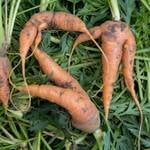 Forked roots are usually caused by stony or heavy soil such as clay. The roots cannot grow freely in the soil or hit rocks or other obstacles and split into two. Cultivate the soil well before planting, dig in some coarse sand or compost to lighten the soil, or grow round or short varieties suited to heavy soil.
Forked roots are usually caused by stony or heavy soil such as clay. The roots cannot grow freely in the soil or hit rocks or other obstacles and split into two. Cultivate the soil well before planting, dig in some coarse sand or compost to lighten the soil, or grow round or short varieties suited to heavy soil.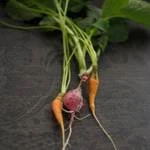 Small roots can be the result of sowing too thickly or over fertilising. Thin seedlings to give roots adequate space to grow. Do not fertilise plants as this may encourage the growth of foliage at the expense of roots.
Small roots can be the result of sowing too thickly or over fertilising. Thin seedlings to give roots adequate space to grow. Do not fertilise plants as this may encourage the growth of foliage at the expense of roots.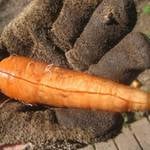 Split roots are usually caused by inconsistent watering when roots are mature. Water deeply and evenly to keep soil moisture consistent and always take recent or expected rainfall into consideration before watering.
Split roots are usually caused by inconsistent watering when roots are mature. Water deeply and evenly to keep soil moisture consistent and always take recent or expected rainfall into consideration before watering.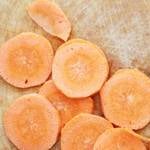 Tough roots usually indicate that the roots were harvested too late. Harvest roots when they are young and tender.
Tough roots usually indicate that the roots were harvested too late. Harvest roots when they are young and tender.


.png)



